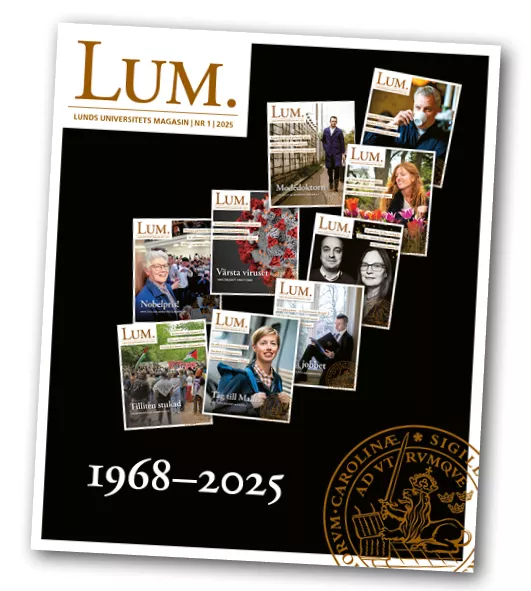The question of how to warn people in the future was raised in connection with the decision made in January this year on the final disposal of Swedish nuclear waste. Nuclear waste must be placed 500 metres down in the bedrock, encapsulated in copper and then embedded in bentonite clay. The warnings about what it is and where it is must be communicated 100 000 years into the future.
Ola Wikander’s task as part of the completed SKB project was never to come up with solutions.
“But if I were to speculate, I would say the most important thing is redundancy. By that I mean, spread the risk by conveying the information through many different means, languages and genres. Oral texts, carvings in stone and on walls, written texts on paper etc. And then to keep in mind the problems with each of these methods so that we can correct them,” says Ola Wikander.
The survival of languages
He points out that the timeframes are absurd. It is difficult to formulate ideas designed for 100 000 years into the future. Research into language reconstruction only goes back as far as 5000–6000 years. It is impossible to know what society will look like so far into the future – or if there will even be one.
“We could speculate about a future that is extremely primitive, a kind of mutant/Road Warrior society where people will do anything to get hold of just a little bit of copper,” says Ola Wikander. “But equally we could be talking about an ultra-advanced society where people will look down on our era, that we all believed in radioactivity like some kind of superstition,” he continues.
Ola Wikander has investigated how information has been passed down linguistically throughout history, partly by pointing out how languages like English have changed over the past 1 000 years, and partly by taking stock of historical examples that clearly illustrate how complicated it is to use language.
One idea is that if it is possible to predict which languages will survive, we could use those.
“Language does not survive because of a Darwinian power. There is an idea that English has survived so long because it has so many words,” says Ola Wikander. “But it has spread to this extent because of the British Empire and the dominance of the United States after World War II. It is often political decisions that determine whether a language spreads and survives,” he continues.
Different styles and genres
It is not enough to just use many languages. It is not the case, he says, that if language X has survived, the whole language has survived. In many ancient languages, only subsets of the language remain, due perhaps to a particular genre of text.
“It is thus not only about increasing the chances that future generations will understand our message by using many languages to create warnings, but also by using many styles and genres within the same language.”
The discussion concerning how to communicate to future generations about radioactive nuclear waste has been ongoing since the early 1980s.
A proposal put forward at the time by the semiotician Thomas Sebeok was to use the often very successful methods of religious groups to pass on texts via oral transmission in customs and rituals.
“He envisioned a nuclear clergy, a secret oligarchy, which passed on this knowledge orally to an extremely elitist small group. The populace, meanwhile, celebrated annual rituals and customs without knowing why,” says Ola Wikander.
“The problem is that religious groups have almost always reinterpreted orally transmitted texts. They want to understand the real meaning and interpret the texts based on the time they live in. The text is preserved almost down to the syllable, but not the meaning of it,” says Ola Wikander.
Reverse psychology
He returns to the importance of redundancy both in terms of the number of languages and the genres used. Warning inscriptions on tombs, in particular, were a major genre during antiquity.
An example he usually uses to illustrate the problem with warning inscriptions is a Phoenician royal tomb from around 500 BCE.
“The grave has a long litany of all the terrible things that will happen to those who open it. Today, the sarcophagus is at the Louvre in Paris. For the French archaeologists, the inscriptions did not have the same power as for the Phoenicians who believed in the gods in the warning,” says Ola Wikander.
In other words, what served as a warning 2 500 years ago did not have any effect in the 1800s. One of the biggest problems when it comes to warning inscriptions is so-called reverse psychology: if someone says you are not allowed to do something, someone else will do it.
Ola Wikander states that in order to inform the people of the future, we need to keep alive the study of historical linguistics. It may seem paradoxical, he says, but historical linguistics and cultural studies of how languages and societies change are vital in order to understand messages that will be ancient 100 000 years from now.



